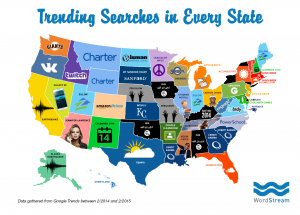Subscribers change over time. Their needs change. Their interests change. Their goals change. And change can be very dramatic from year to year and season to season. So even if your email program has a great onboarding program where you learn about subscribers’ preferences, it’s not enough.
Analyzing subscriber behavior can give you valuable insights into their current needs and wants, but you should also be doing progressive profiling on a regular basis: that is, directly asking subscribers questions about their interests and preferences so you can serve them better.
Here are four factors to keep in mind when developing or refining your progressive profiling email program:
1. Pick your timing well. Asking subscribers about their summer travel plans in December isn’t likely to net you much useful information. Ask when a topic is top of mind and then be prepared to act quickly.
For retailers, seasonal transitions are key. For instance, Zulily sent a great email in mid-November last year that promoted toys, but more importantly asked subscribers if they’d like to be notified when any of a dozen brands were available on Zulily.com. After customers selected their brands, they got alerts a couple of weeks late — right on Black Friday Eve. That put Zulily in subscribers’ inboxes on a critical shopping day with a message that was highly relevant to their interests. That’s super-smart timing.
Identify the pivotal moments for your own customers and develop progressive profiling efforts that help you follow up with messaging that will really resonate.
2. Keep your survey short. The longer your survey, the higher your abandonment rate will be — and you want as many subscribers to answer questions as possible. So shorter is almost always better.
In fact, the best starting place is one question. What’s the one question your subscribers could answer that would be immensely valuable to you in the very near future? For Lowe’s in March of 2013, that question was “What [home improvement project] are you working on this spring?” The email allowed subscribers to answer by clicking on one of three straight-forward links, each of which made it very clear what kind of information the subscriber would get from Lowe’s in the weeks ahead.
3. Make your questions fun. This is especially important if you’re asking a bunch of questions. Think lifestyle magazine quiz, not high school history quiz. And increasingly, think visual quiz, not text quiz.
This May 8 email from BaubleBar is a great example. The progressive profiling survey that it linked to asked subscribers about colors and jewelry and clothing trends — all with visuals. Doing it this way creates a more intuitive, richer, and more interesting survey.
Furniture.com ran a similar progressive profiling campaign in May that asked seven questions to determine subscribers’ summer entertaining style.
4. Act on the responses. If you don’t have a plan in place to act on the answers provided to your questions, then don’t ask the questions. Failing to respond hurts your credibility and diminishes responses to future progressive profiling endeavors.
This is a great initial screen for your list of potential questions. If you don’t have a clear and impressive way to respond to a question, then it’s best to recast or drop the question.
Email and Web analytics are extremely valuable to creating relevant email messaging, but sometimes it’s more effective to just ask subscribers a question. Use these tips to maximize the results of your progressive profiling efforts.
(320)







